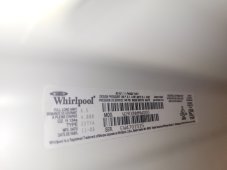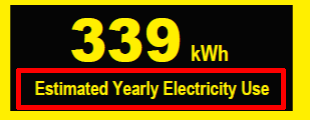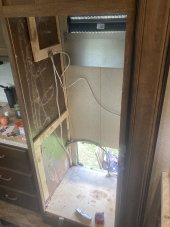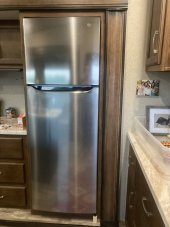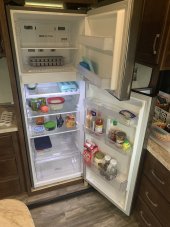I guess I should be looking for a propane leak.
Not sure you got your math right. A 30# bottle holds 7 gallons of propane. For 16 years I've been purchasing propane in gallons for my motor home. Gallons is my reference point. The tank has a capacity of about 12 gallons. I can go for 7 weeks before requiring fill-up. Propane usage is for the fridge and the cook-top. The cook-top gets quite a bit of use, daily for breakfast and about every third day for dinner. Another person reported that they can go for 2.5 months with fridge as the only load. That would be equivalent to 12gal / 10 weeks = 1.2 gal/week. Your estimate for a 30# bottle is 2.3 to 3.5 gal/week. OK, kind of close.
Definitely got the equiv battery capacity wrong. Ran it for 30 gallons vs. #. It's 189kWh.
Pretty easy to find online references reasonably consistent with my numbers. Additionally, I could see the 1W difference when my fridge opened and closed the propane valve. It specs at 1300BTU/hr. Duty cycle was right around 60%, thus 18,720 BTU/day. Thus I used .87#/day. This was with the unit closed the entire time - never opened and a 7.5 cu-ft model vs. the OP's 11 cu-ft model. I got a little over a month on a 30# bottle. I was basing the 2-3 weeks on the fact the the OP's fridge is larger, and it's in use daily. Plus, I'd rather have someday say it lasted a week longer than I said it would.
Regarding estimated yearly electricity use; 339 kWh/year = 930 Wh/day = 78 Ah/day on a 12V battery. The compressor RV fridge I mentioned had a consumption of 150 Ah/day (real data). That's almost twice the consumption. It might get hotter in the RV and the inverter is not 100% efficient. If it's 80% efficient then 78 Ah/day increases to 97 Ah.
The energy star ratings are based on test data. Whatever the case, your numbers or the DoE, it's a lot better than the 600Ah the RV fridge would use on AC power.
BTW, the fact that the LiFePO4 battery is 48V doesn't mean the 12V converter can't charge the 12V battery, resulting in an error in measuring the absorption fridge power usage.
Not sure if this is directed at me, or why you're saying it. I never claimed the 12V converter can't charge the 12V battery. I said it couldn't charge the 48V as my comment was in the context of an "infinite loop" where the battery is powering the inverter is powering the converter is charging the same battery, etc., until the battery depletes itself.
20 degrees at night, maybe 40 during the day, 27 foot traveler I used to have.
Cool ambient reduced the load on the fridge. When it's temperatures like that, my absorption fridge power consumption drops to about half was it does on a 75° day.
A 30lb bottle of juice (7 gallons) lasted 19 days running furnace, hot water, cook top and fridge.
You sure you didn't have a failover circuit where the value switches to the second bottle?
I was conscious to turn the water heater and furnace off if I I left for a hike or whatever but I kept it very comfortable inside.
The 30k Btu furnace would run like 3 hours on a gallon of propane.
Yep. But what that says is that in 19 days, you didn't run the furnace more than 21 hours total, yet you kept it very comfortable inside... that's running your furnace a little over 1 hour per day. That does not seem possible in 20-40°F weather.
I think a fridge burner is like 1200 btus so if on constantly and never cycled off it would run a loooooonnnnggg time.
21,548BTU/# * 30# = 646440 BTU
646440BTU/1200BTU/h = 539 hours - 22 days.
Maybe his does, but yours appears to be in error.



